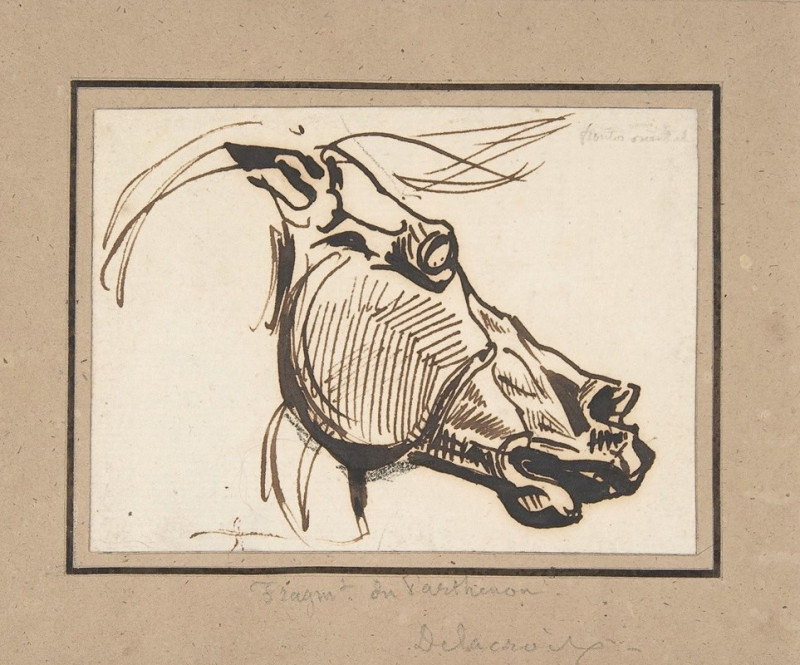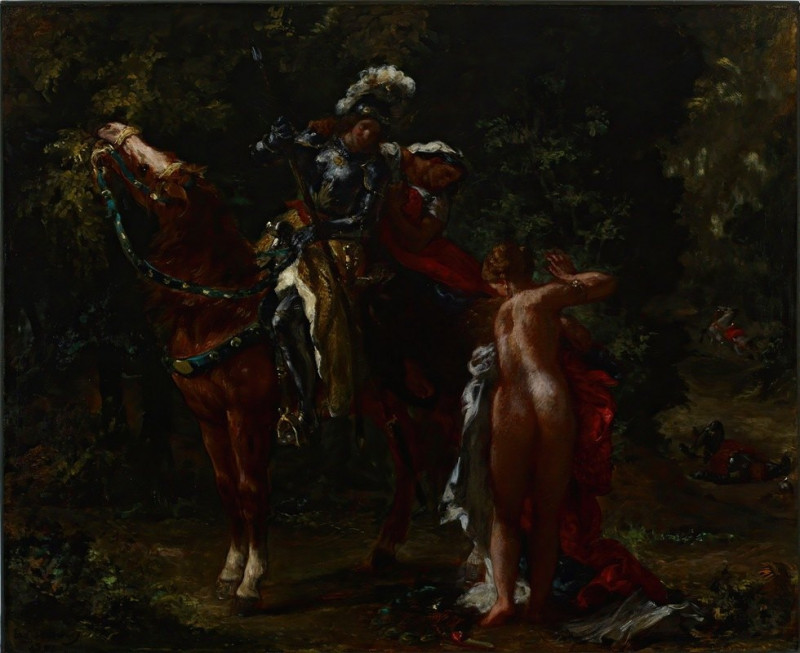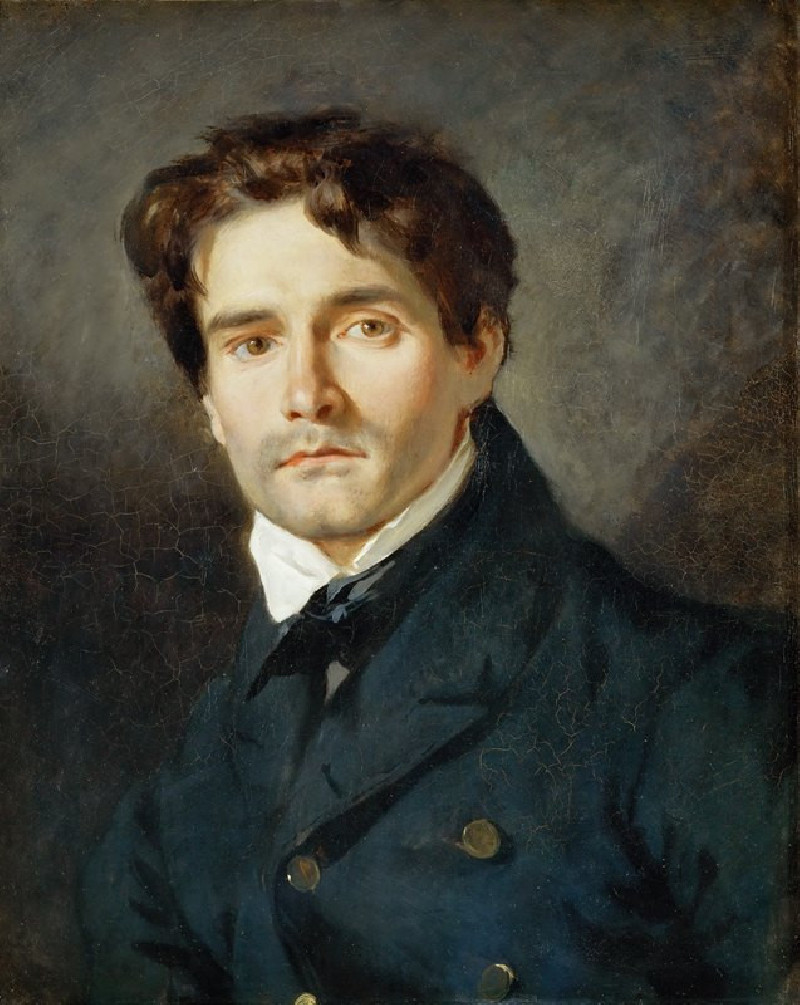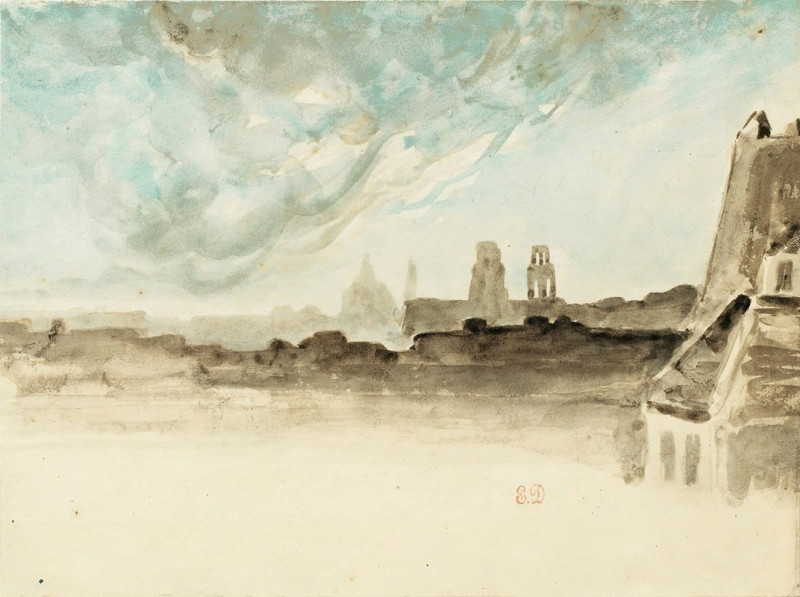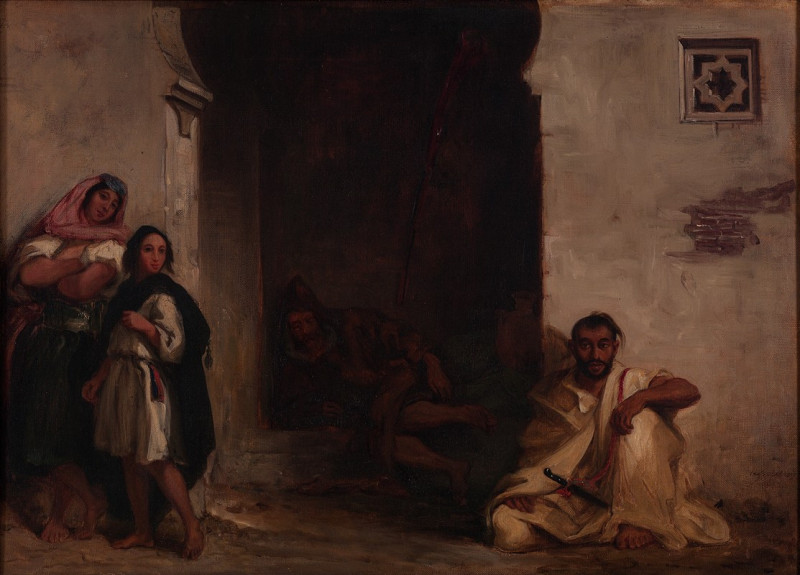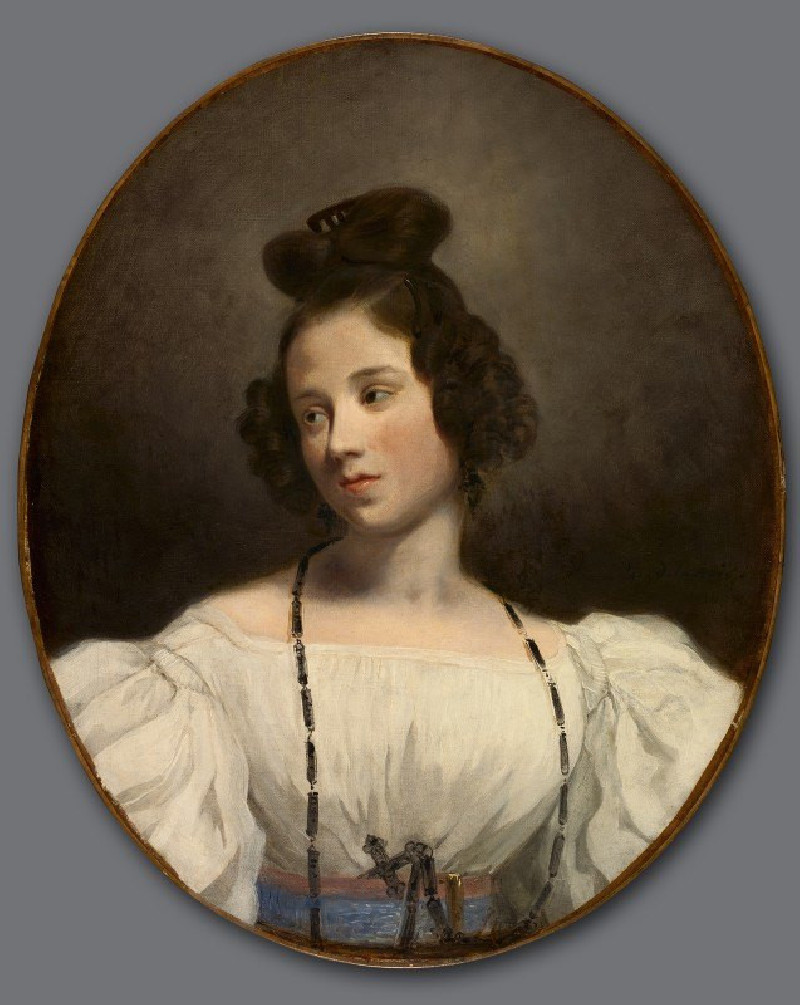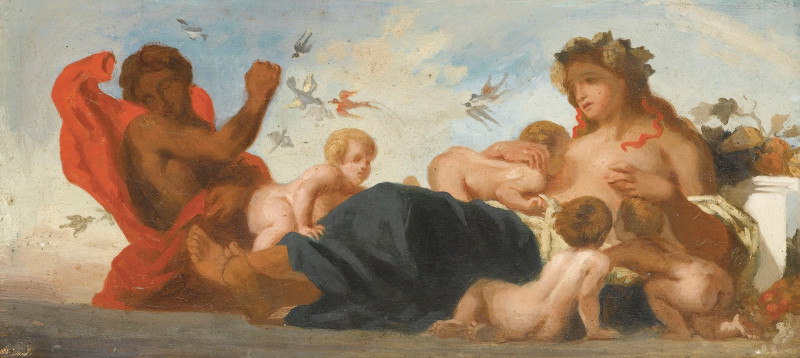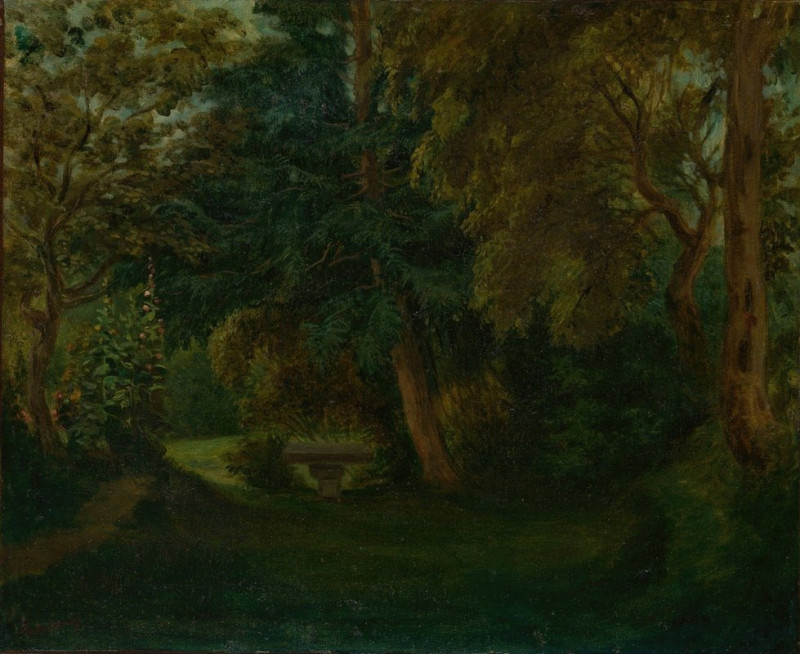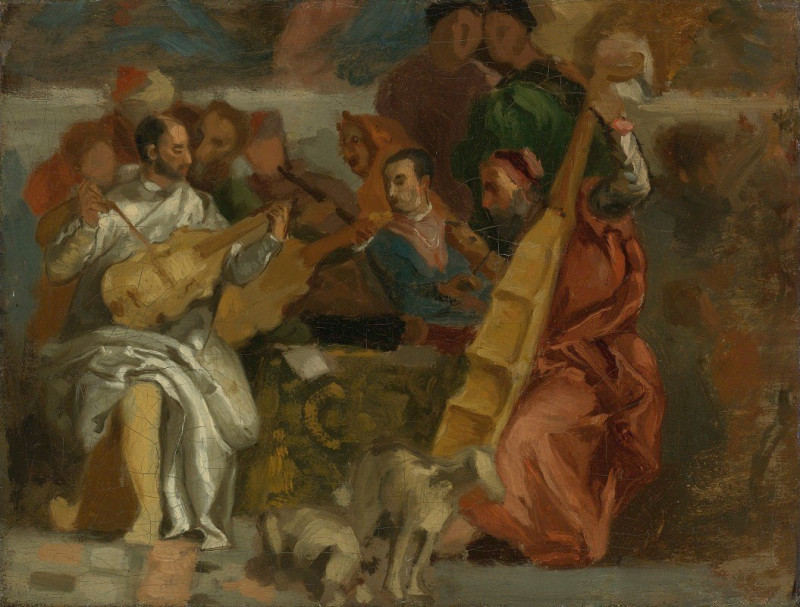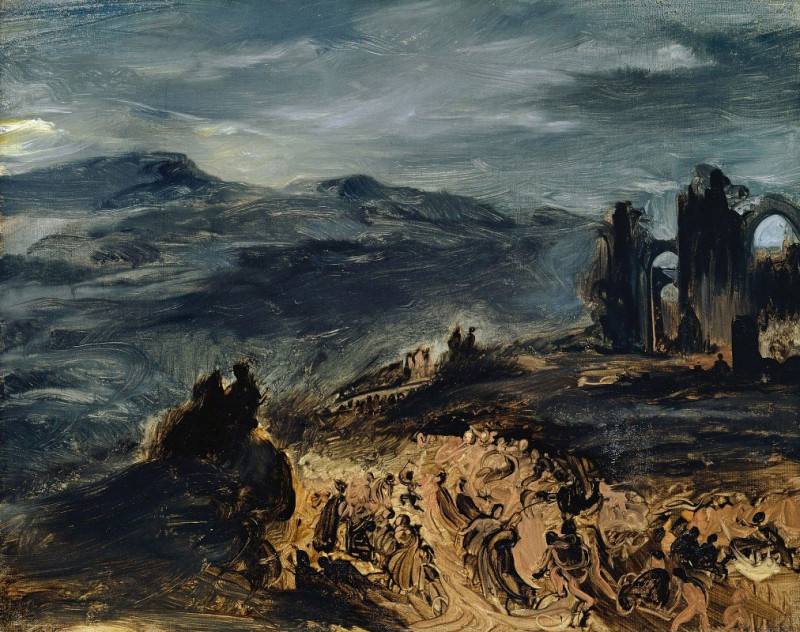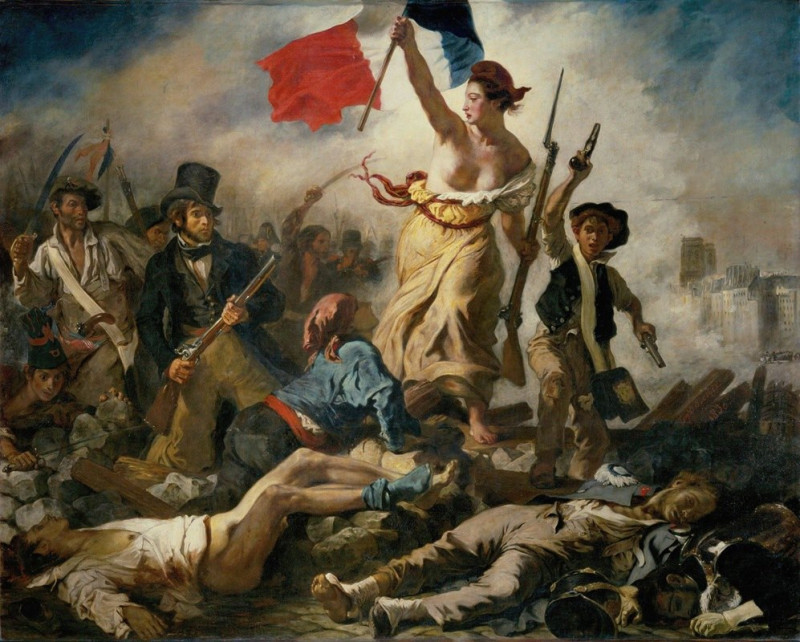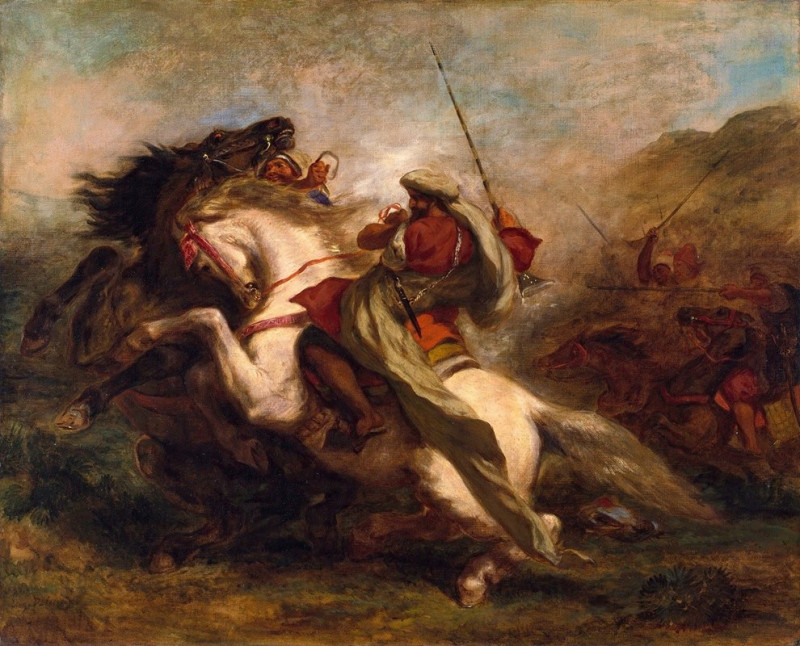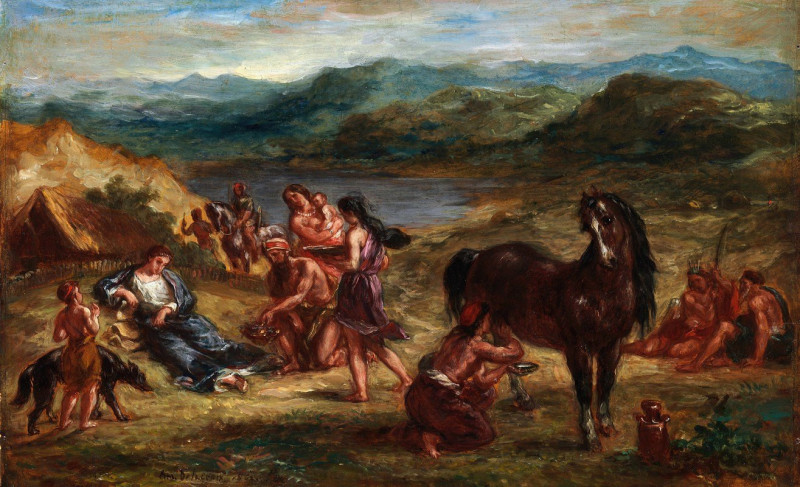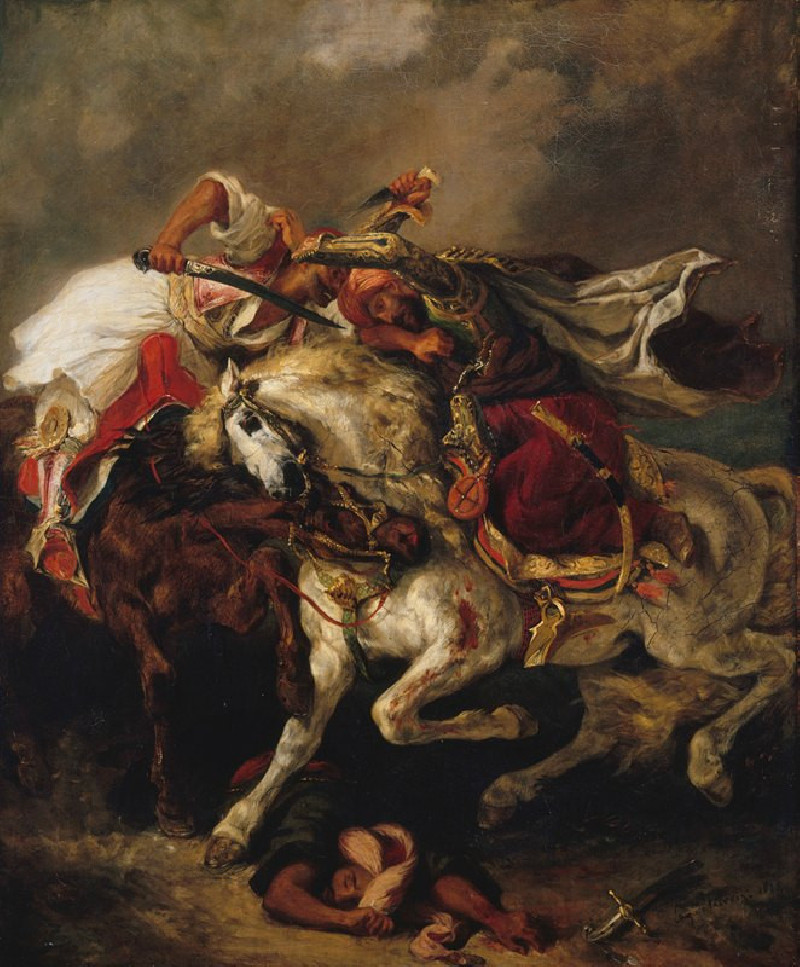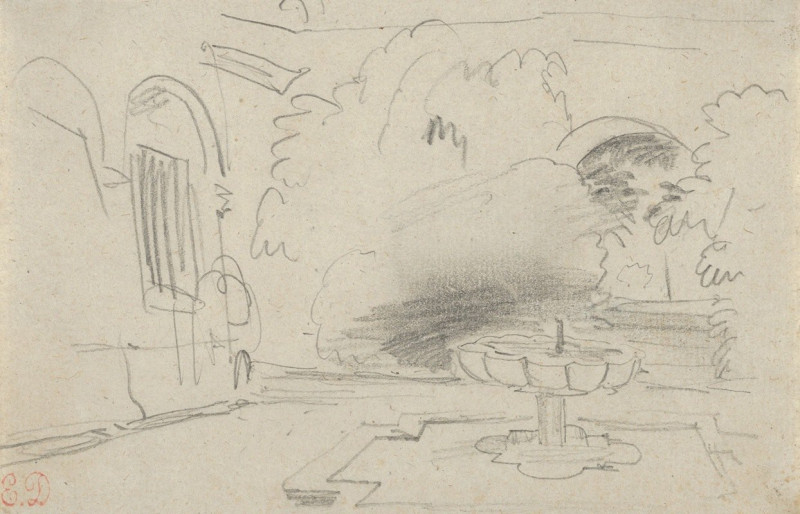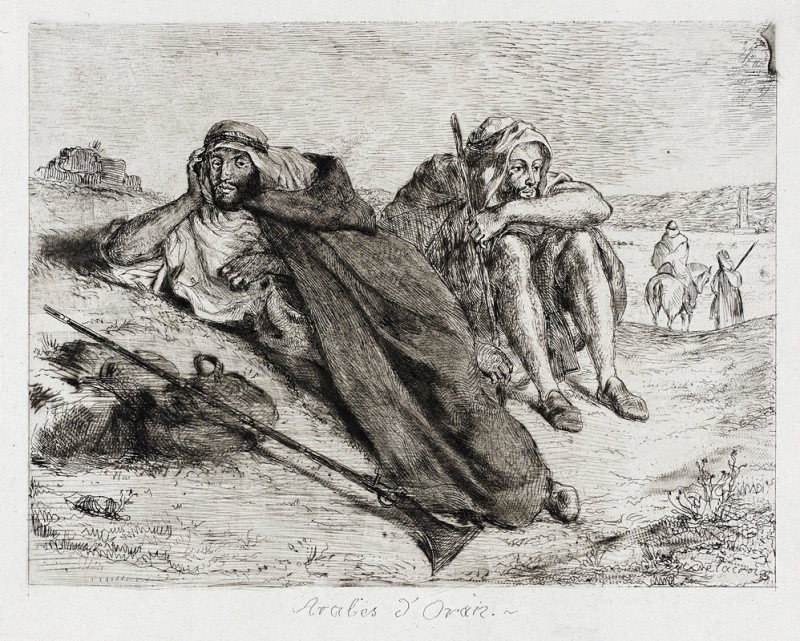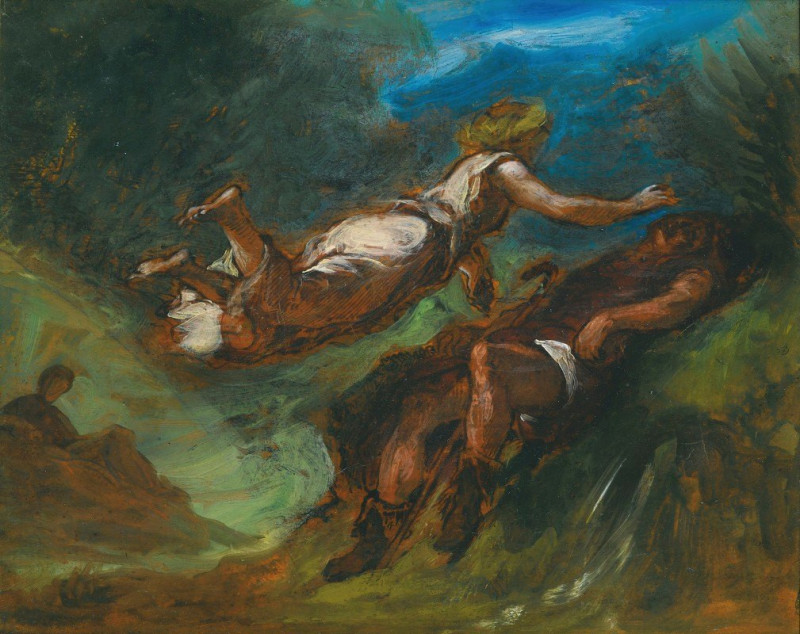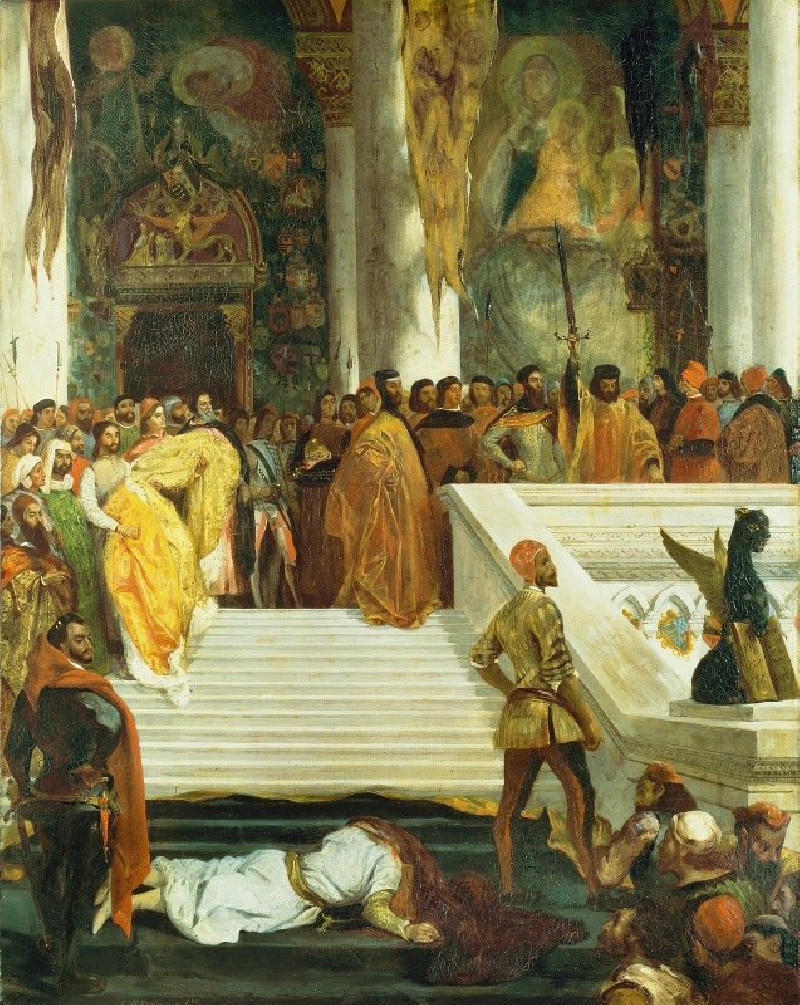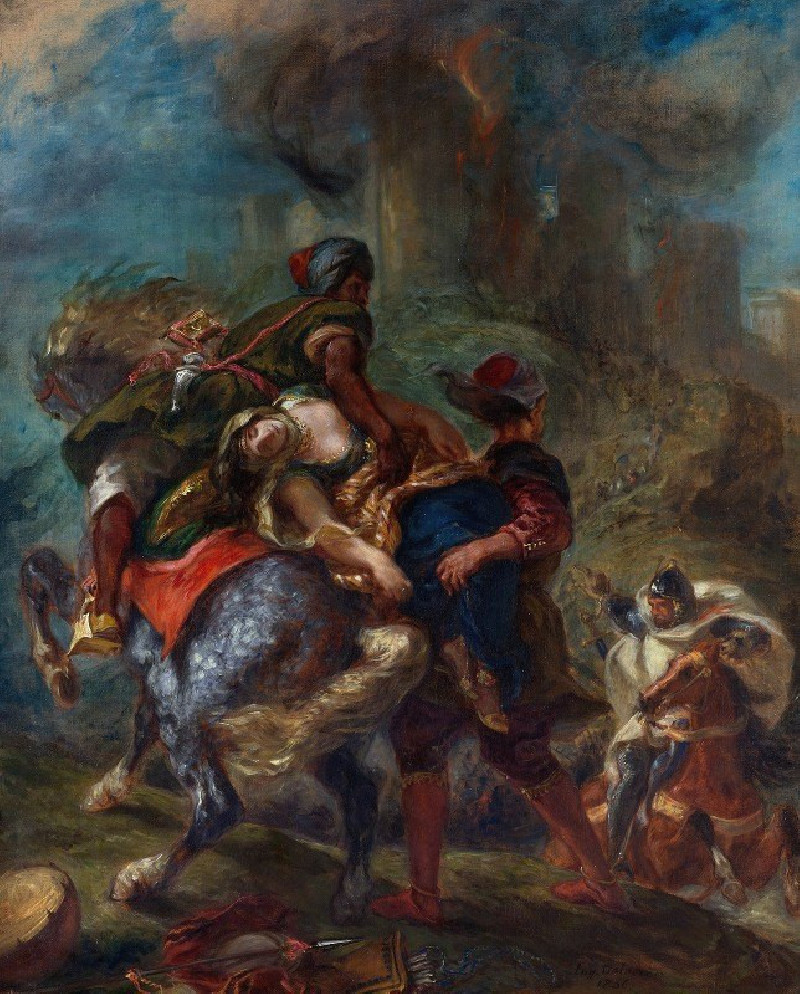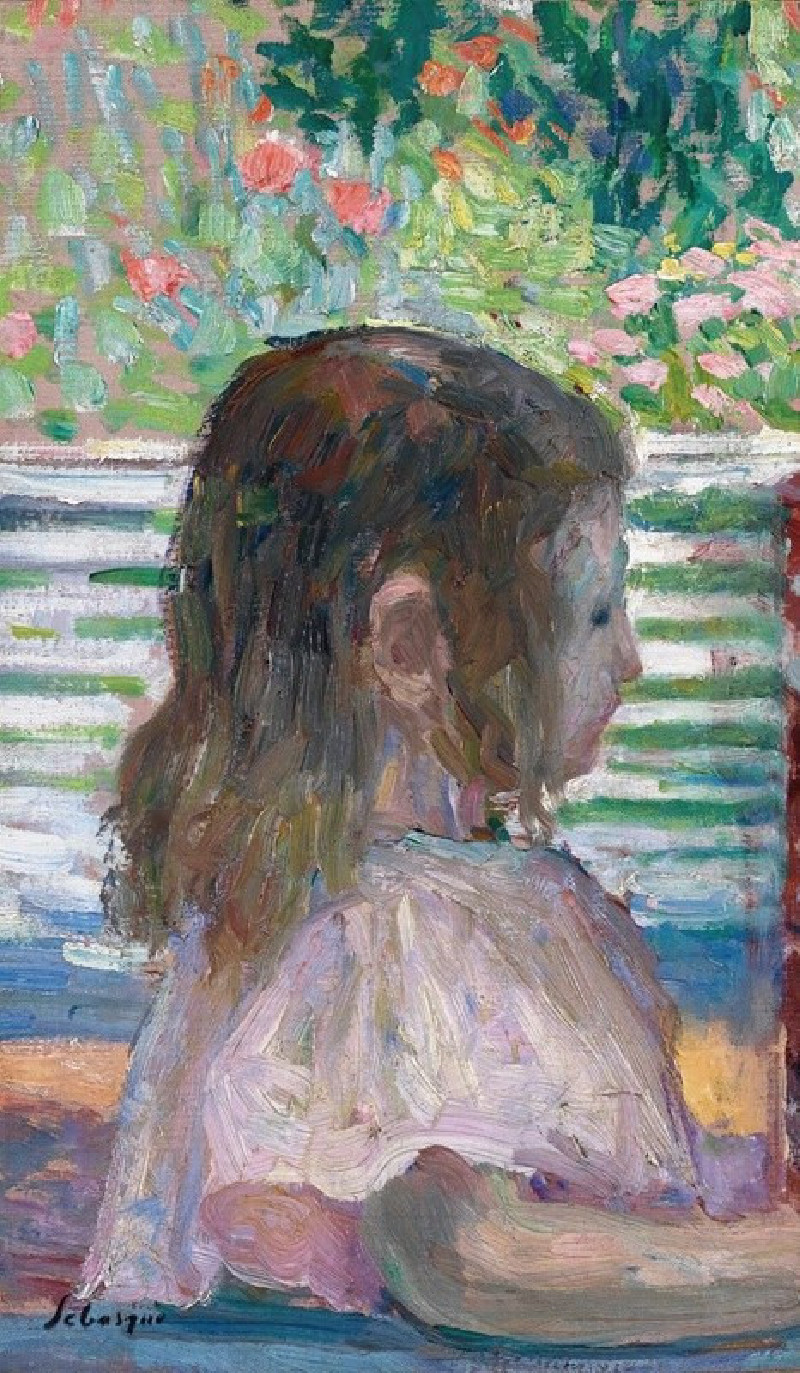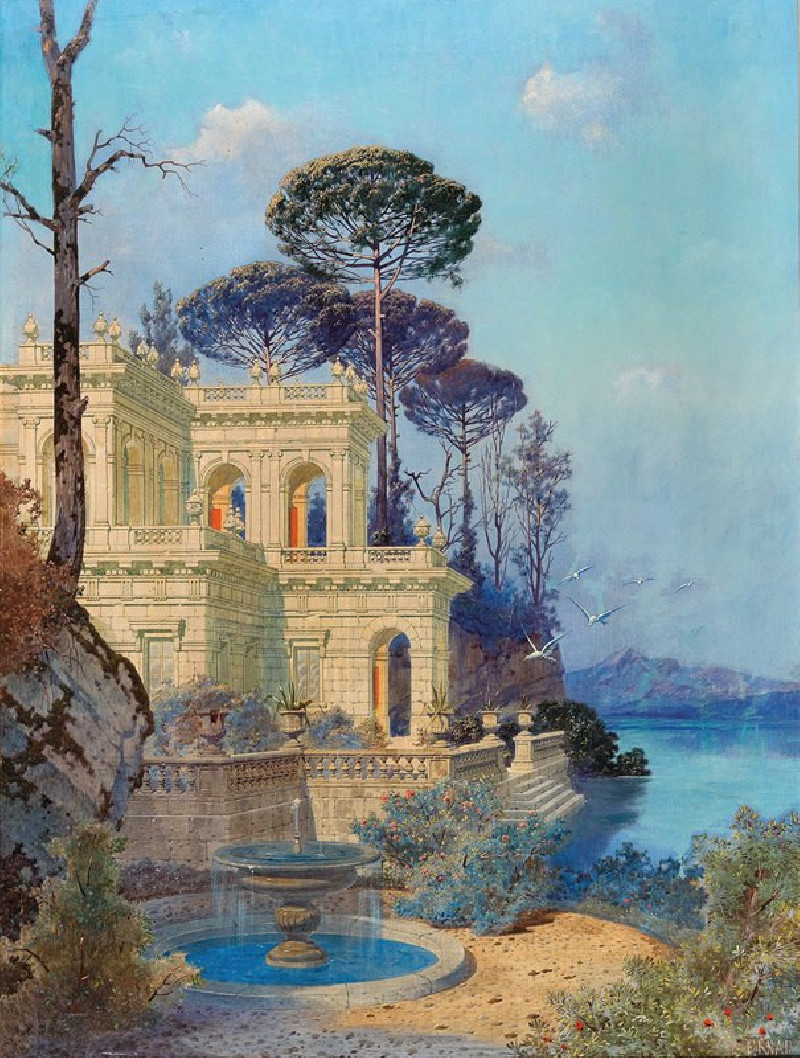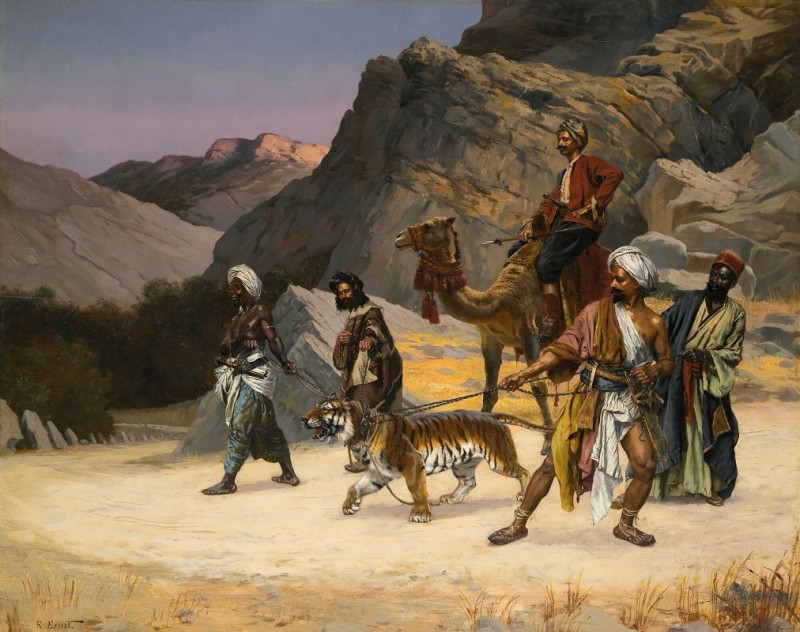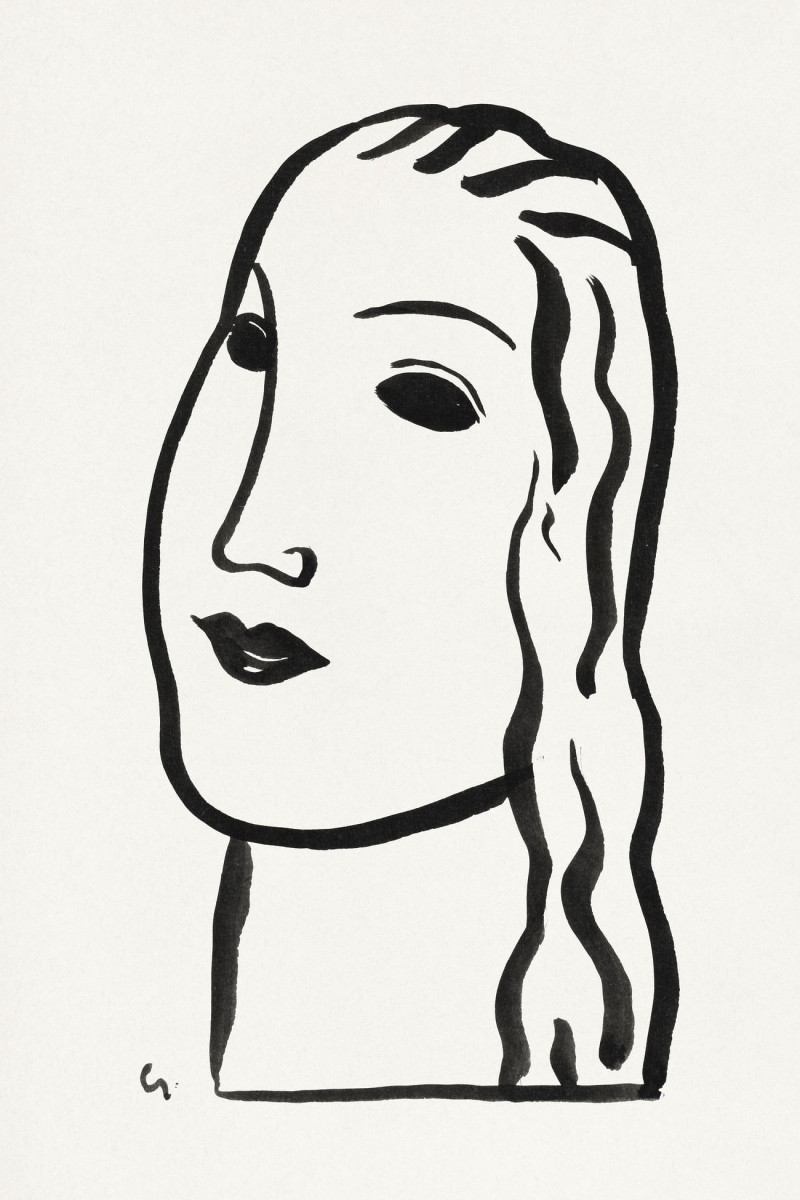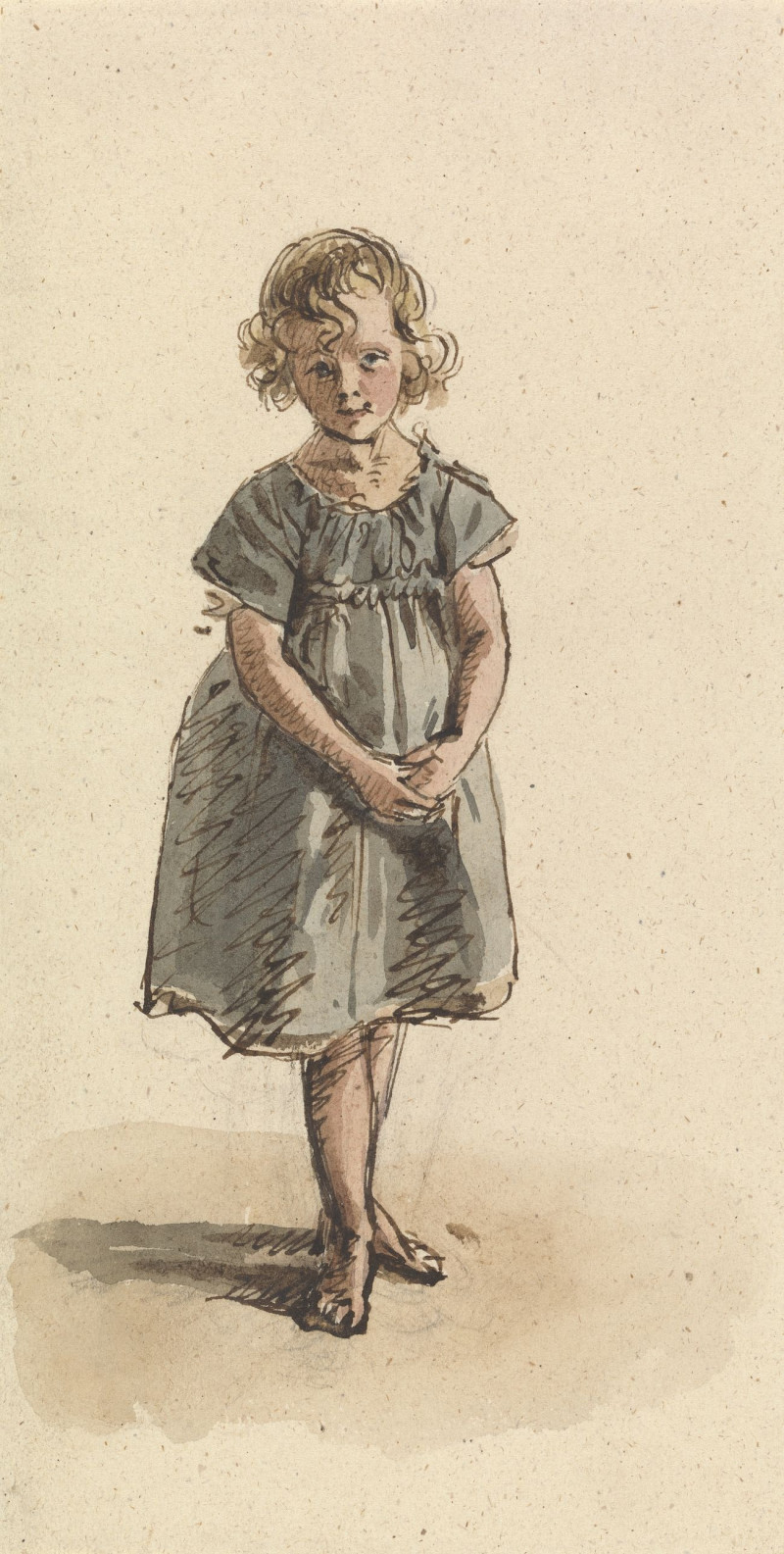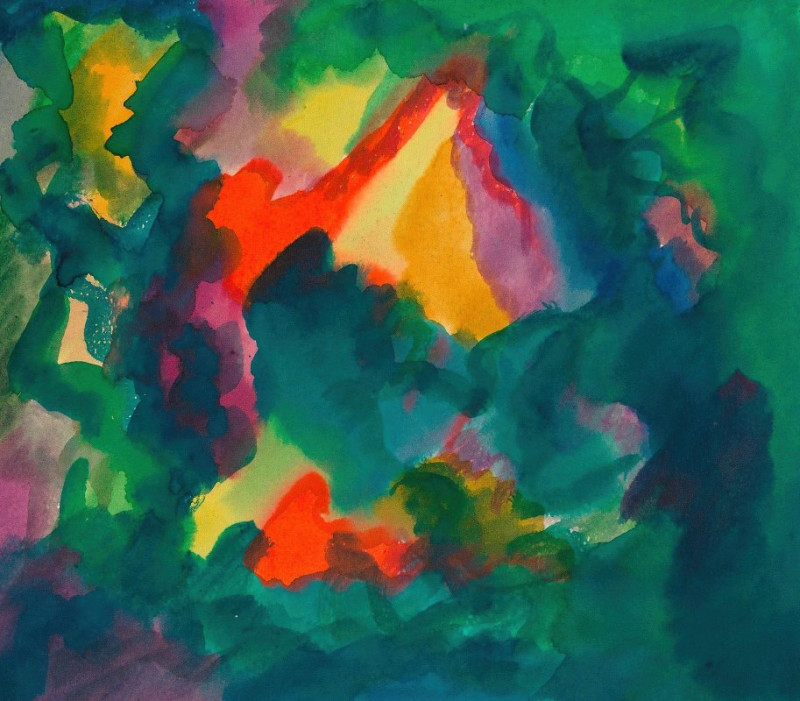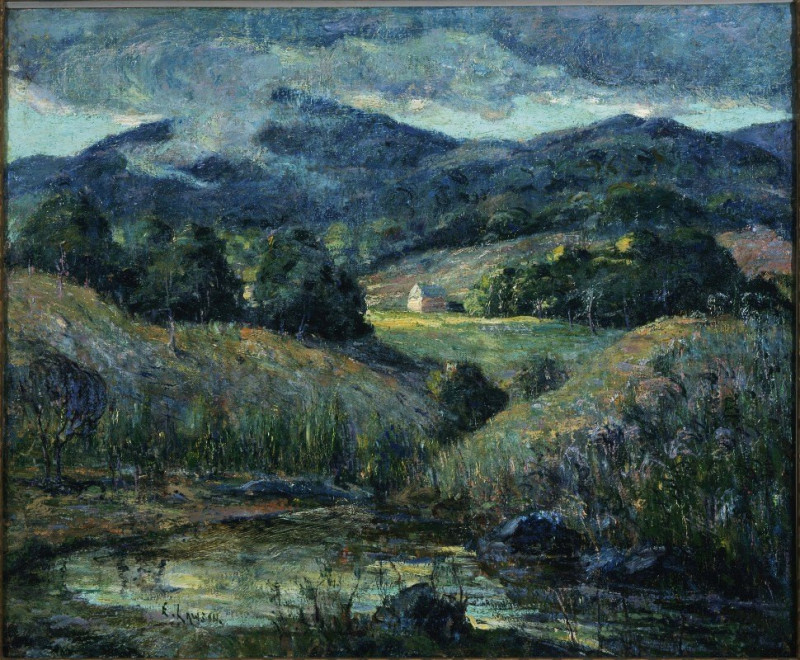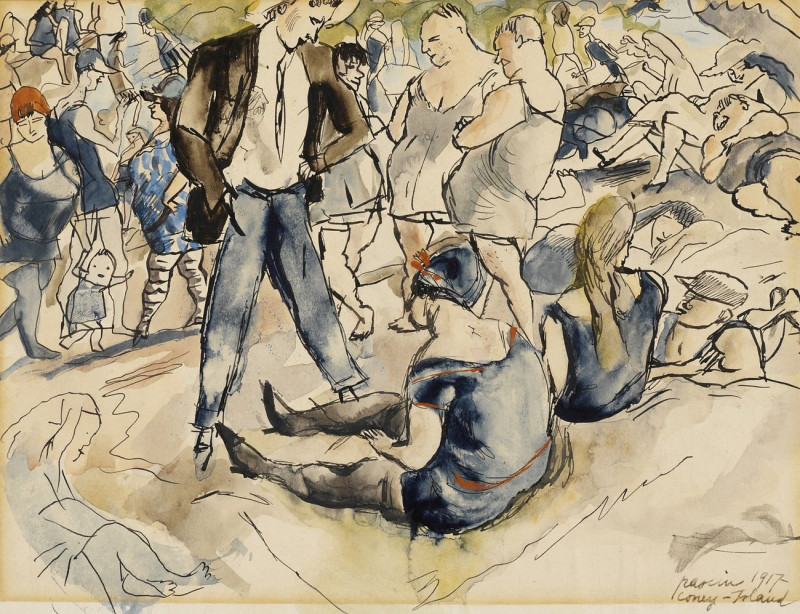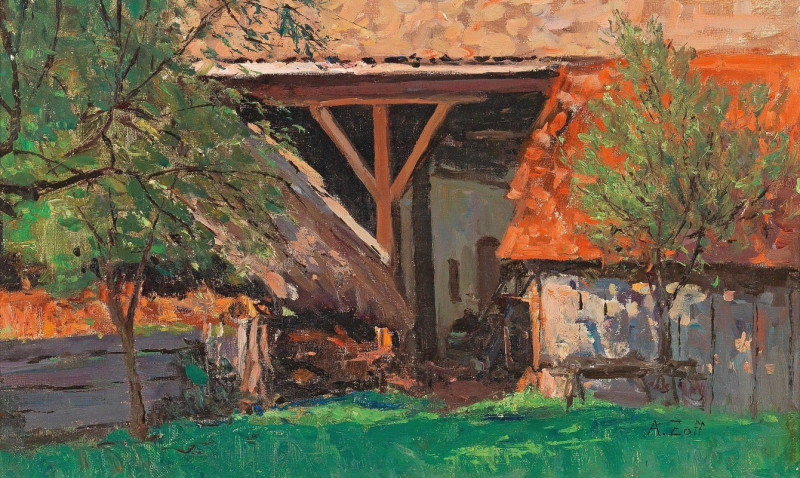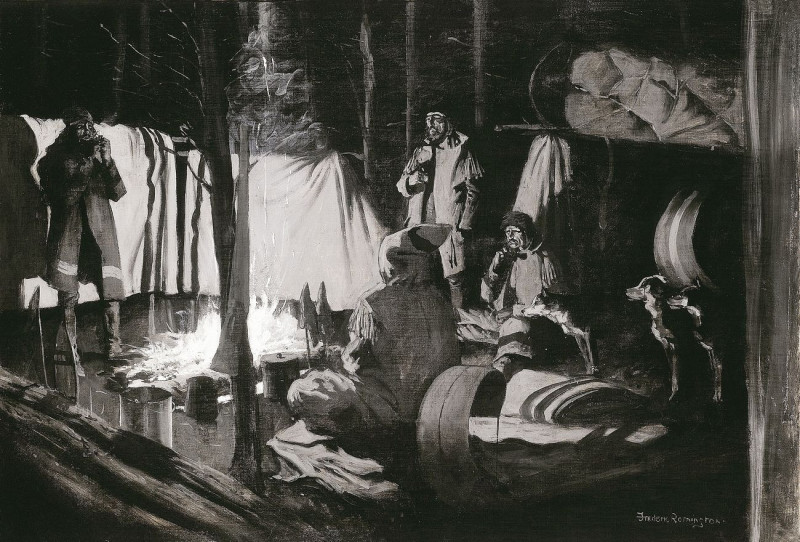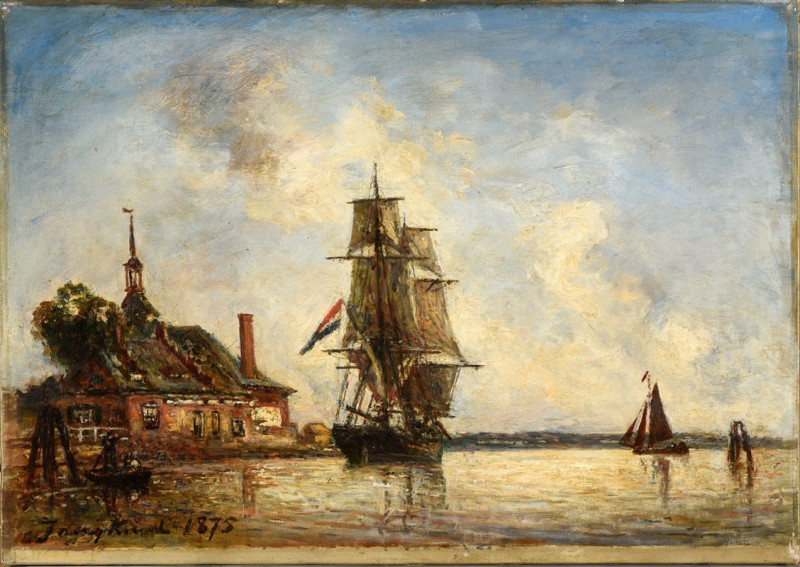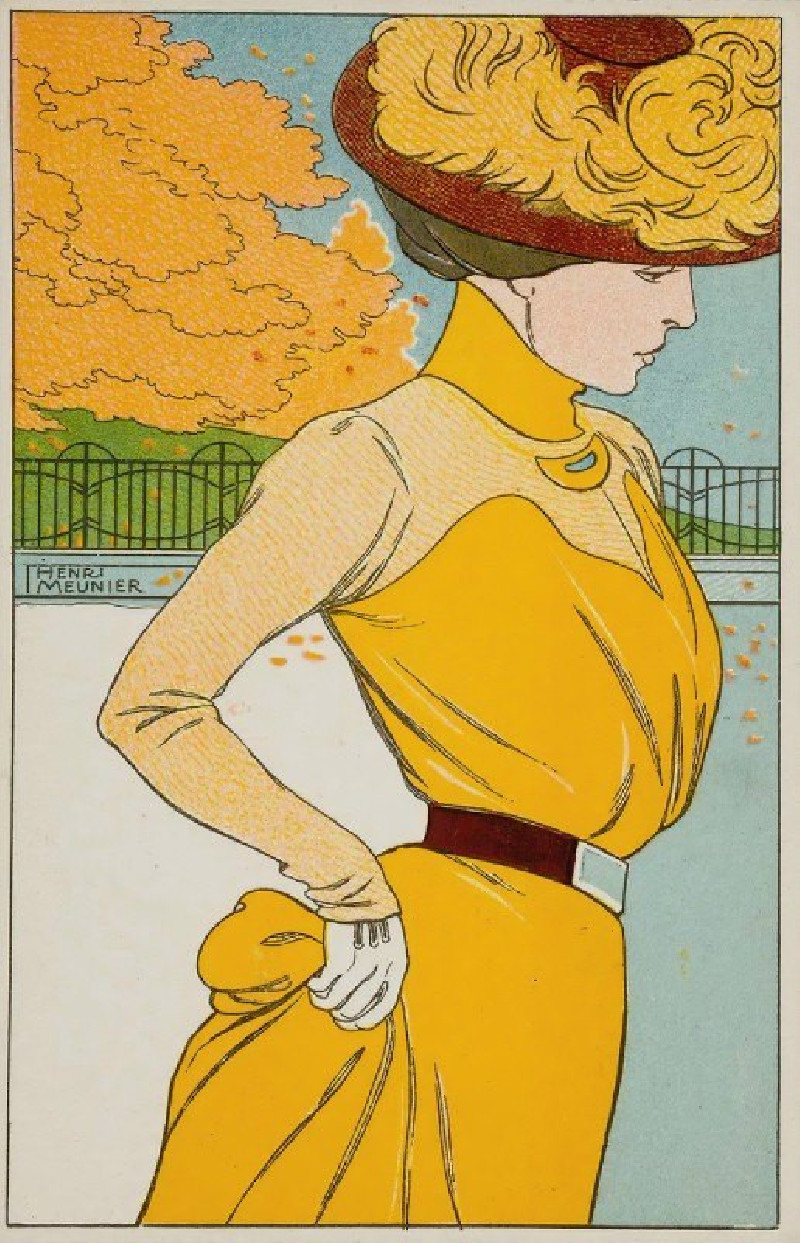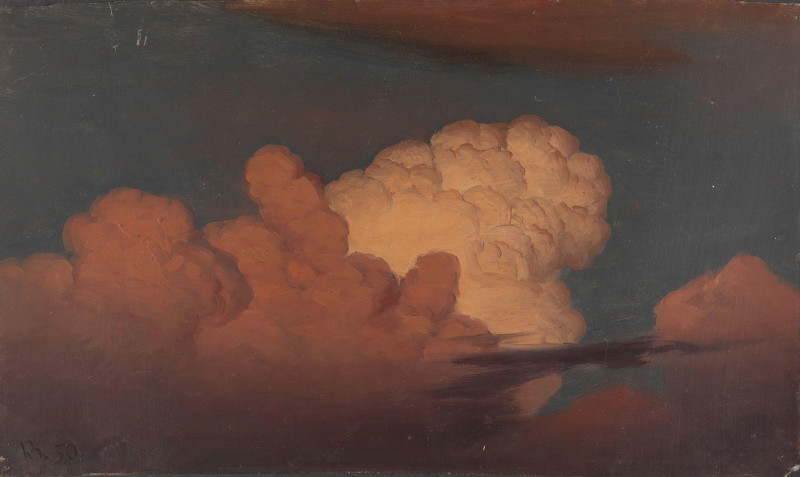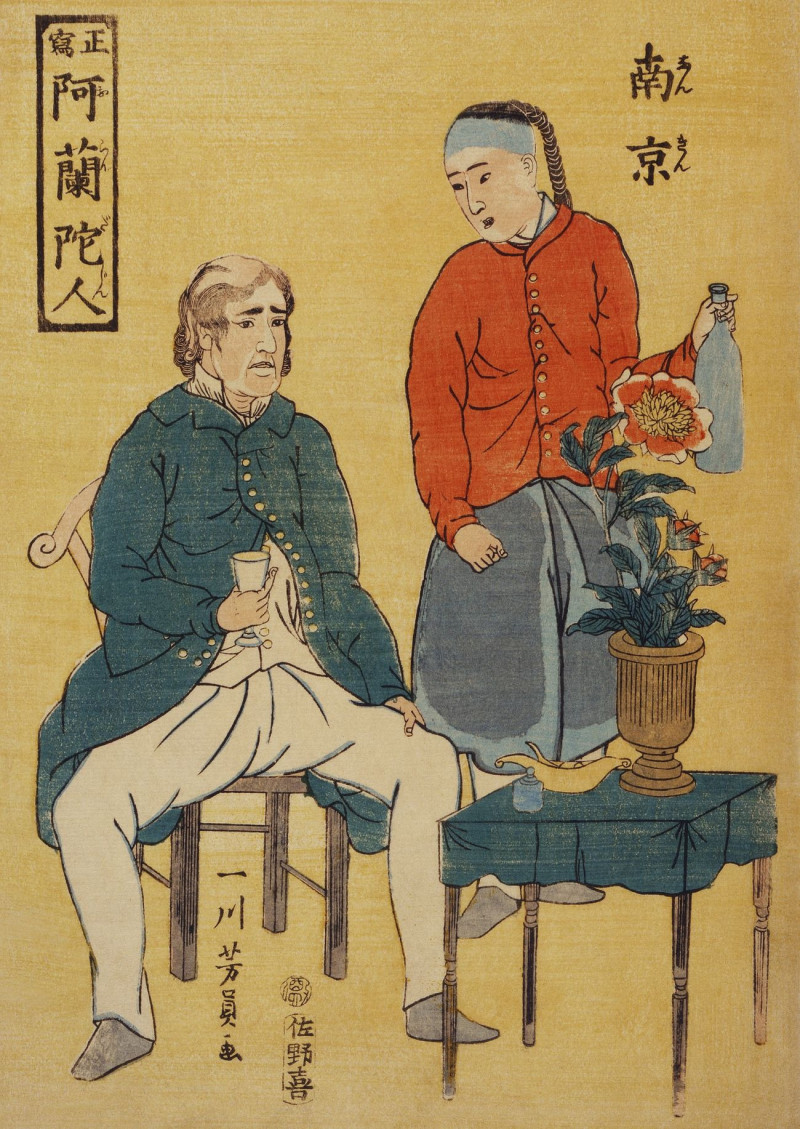Head of a Horse, after the Parthenon (ca. 1825)
Technique: Giclée quality print
Recommended by our customers
More about this artwork
Eugène Delacroix, revered for his profound impact on the Romantic movement, presents an evocative piece titled "Head of a Horse, after the Parthenon" (ca. 1825). This artwork captures the majestic form of a horse’s head, sketched with a bold and expressive line work that brings out the dynamic and muscular structure of the animal. The drawing, inspired by the classical sculptures of the Parthenon, reflects Delacroix's fascination with ancient Greek art and its ideals of beauty and expression.In this piece, Delacroix masterfully employs a limited palette, focusing on stark contrasts that emphasize the interplay of light and shadow. This technique not only highlights the powerful contours of the horse's features but also imbues the work with a sense of drama and intensity. The horse’s mane appears windswept, adding a sense of motion and vitality that is typical of Delacroix’s ability to convey emotion and energy through his art."Head of a Horse, after the Parthenon" showcases Delacroix's skill in drawing and his deep appreciation for antiquity, making it a compelling study of form and history.

